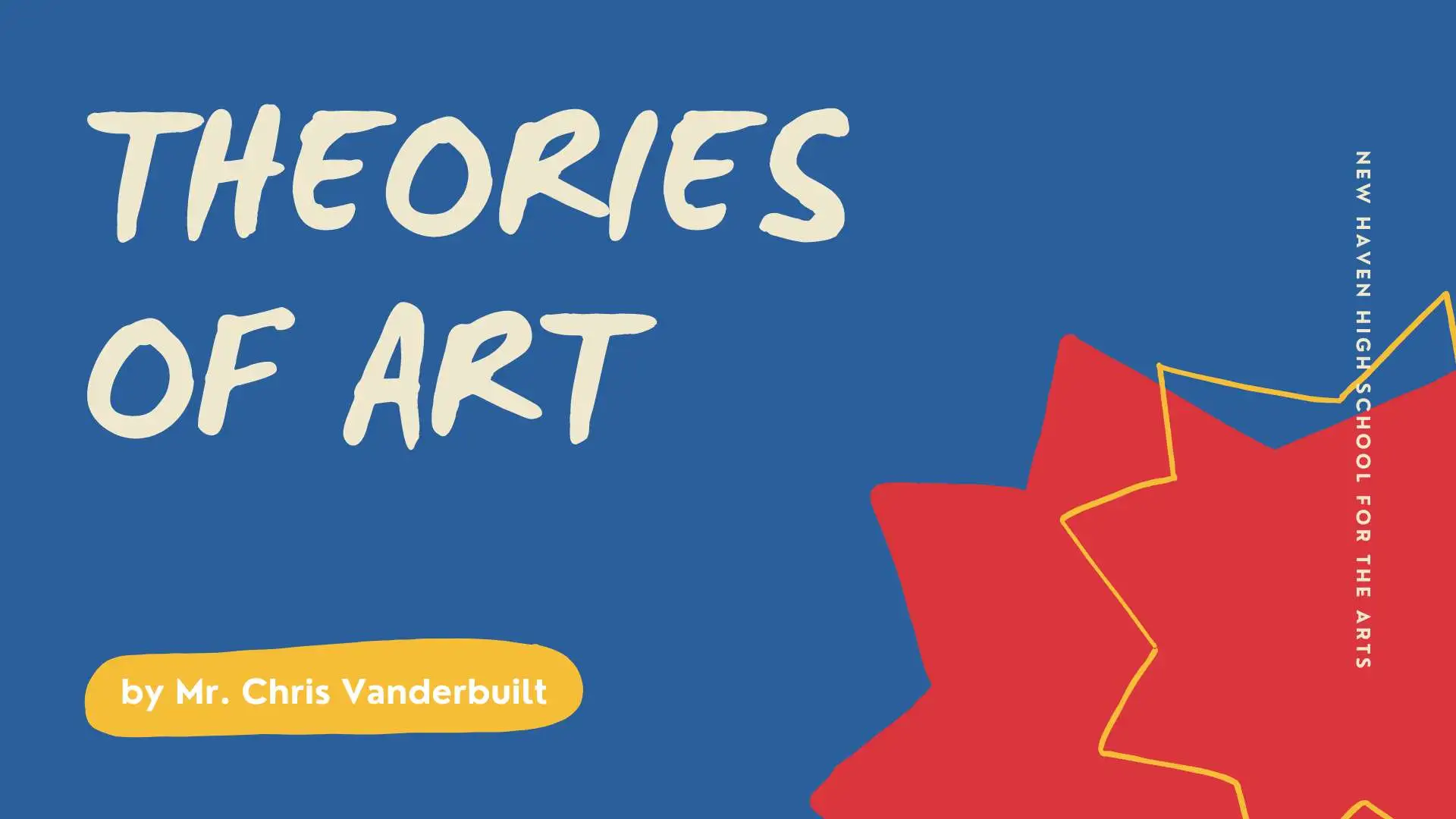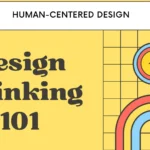This article is solely focused on Location Place Attachment Theory, which looks deep into how people create tight connections with the places around them, even if it doesn’t seem clear right away:
it enters into the complex concentrated environment, or world, of why we feel attached to certain spots, what makes up this bond, what affects it, and how it applies in real life. One may immerse oneself in the knowledge that researchers from psychology and environmental studies worked together to understand these strong relationships we develop with places.

Introduction to Place Attachment Theory
About how much people bond with places they enjoy, like their primary vacation hangout or the neighborhood they’ve grown up in, Place Attachment Theory researchers in psychology, geography, and even environmental studies are extremely into studying Location Attachment theory.
They’re solely focused on figuring out this special bond people have with certain spots that mean a lot to them, Place Attachment Theory not only because of the actual location–but because it gives them a feeling of who they are and where they belong. And this isn’t simply a simple connection; it regards feeling connected, mattered, and somewhat writing part of your story with that location.
When these intelligent and informed people delve deep into this theory, Place Attachment Theory one thing they find extremely clear is how this bond with places changes as people do. It’s not simply a stay-the-same-forever type of situation.
From the changes that make a big impact in our life, the crowd we work with, or just the location itself going through a sudden change, it’s clear our feelings toward a spot can change completely;
it is moreover apparent to my friend and I how these changes highlight the special and complicated connections we have with our favorite places, explaining the growing fondness we develop for some areas as days go by. We can easily see that it’s very clear that this connection issue with places is not only very deep but also keeps changing.

We can take as a definite know-that this content matters. Understanding this deep connection, Place Attachment Theory or the concrete and clear culmination of this comprehending why people –in actuality– stick to certain spots like magnets and soak up its undercurrent can teach us a lot about what drives people,
shapes their behavior in social settings, and even how they think about the environment they live in. Academic buffs never get tired of piecing together this complex puzzle, Place Attachment Theory because it’s got hefty effects not only on the person but also the bigger picture of communities.
One mustn’t deny that the idea of feeling attached to a location is getting a significant quotient of focus these days, Place Attachment Theory not simply when we’re thinking about where to convene –but also in serious material such as building cities,
protecting old buildings–and making sure communities stick together. People are using what they learn from this to help make decisions that involve everyone, Place Attachment Theory aiming to create places where people really want to live.
Everyone’s starting to realize that the signs pointing to why we feel connected to certain spots aren’t simply random.
It’s not only about the location but also about the stories, traditions, Place Attachment Theory and values tied to it that make us feel a certain way. Note that delving into material like traditions, what society values, and history really shows why and how people feel drawn to their special spots.
The whole concept of being tied to a location? It’s flexing and changing as we dig more into how individuals feel with their environment. By looking into how closely people and their spots are linked,
we are learning new things about the large role our favorite places have in shaping who we are, what we dream about, and what we strive to do. Ultimately, Place Attachment Theory this helps us grasp the true essence of feeling at home somewhere.
Historical Background
In the mid-20th century, some intelligent and informed people began to study why we get so attached to certain places. It was people like Edward Relph and Yi-Fu Tuan who really began things. Relph wrote a very special book called Location and Placelessness, Place Attachment Theory where he discusses how a location isn’t simply a spot on a map–but it’s extremely important to who we are.

After Relph shared his ideas, Yi-Fu Tuan comes along with his book, Space and Location: The Perspective of Experience,” Place Attachment Theory and he explains things in more detail. Tuan says that places aren’t only about what you can touch or see–but there’s also this mix of feelings and ideas that we connect to them.
Tuan’s search helped everyone understand better how our minds and hearts connect to places. Through these people and several other intelligent and informed people spreading their ideas across psychology, geography, Place Attachment Theory and a couple of other fields,
we started to get a clearer picture of why we all have our favorite spots and why we feel a certain way about them. It may have once seemed unfathomable–but we know that our brains do some pretty wonderful phenomena when we think about places that matter to us. What’s up with being so into places,
like your antiquated or that one vacation spot that blew your mind? One may reassure children in the knowledge that all this chasing of why we dig places is based on some serious thinking that’s been going on since around the 1950s.
Relph, Tuan, and a group of other smart and knowledgeable people really helped us understand why some places feel special, Place Attachment Theory not just like empty land and structures, to us.
It’s absolutely undeniable that humans have a deep connection with the places they’re around, thanks to what those intelligent and informed people in environmental psychology started looking into; Place Attachment Theory they called it location attachment, a special way to say we really feel a certain undercurrent with certain spots,
both nature spots and city types. Early on, people like Roger Ulrich and Rachel Kaplan figured out that convening in natural places can actually make us feel better, Place Attachment Theory showing us that being attached to places is good for our well-being.

Back when this all began, it completely changed the industry on how intellectual types thought people and their environments got along. It wasn’t simply about where you live being about the money or the space; Place Attachment Theory this theory included that we love these places because of our feelings and all the experiences we’ve had there.
Now, all the think tanks and those working on making cities better or saving green spaces are taking this heart material into account. It is moreover apparent to you and I how this goes way past just thinking our favorite parks or buildings are nice to look at.
Location attachment digs into why and how these spots become extremely meaningful for us, Place Attachment Theory painting a bigger picture for everything from town planning to making sure natural places are protected.
Theoretical Framework
People get really attached to certain places because of the emotions, thoughts, they do related to that location. This connection isn’t simply about feeling good there–but also thinking and behaving in ways that show they care about the location. Essentially, Place Attachment Theory people feel a mix of feelings which cause this problem with attachment.
And in the final analysis, one finds that location attachment is a special way of saying that people have strong feelings, Place Attachment Theory thoughts, and actions connected to certain spots. At the root of all this is a strong mix of liking a spot because of great memories or good feelings, which makes them want to take care of it.
I believe, as you might think or agree too, that the whole concept is hinged on three big ideas: feeling emotionally connected, having thoughts tied to a location, Place Attachment Theory and how we act because of those feelings and thoughts; there’s a whole scientific theory that digs into how and why people end up loving certain places so much, showing it’s through emotions, thinking, and actions linked to those special spots.
Why do people feel so connected to certain places? It begins with the stories and pictures in our heads. This is our way to figure out the world around us and see where we fit in with everyone else. Sometimes, Place Attachment Theory you might stop and think, how do these thoughts and images in our minds really shape who we are and how we get along with other people?

Like, when we move forward to keep a community spot very clean or enjoy visiting every corner of our neighborhood. Doing these things somewhat gives off a feeling like, Place Attachment Theory these are my friends–but it’s not simply the content we think up that matters. What’s large is actually doing things that show we care about our small place in the world.
And here’s a thought for you: the feelings we get from just thinking about places and the good things we actually do there aren’t in their own separate bubbles. They’re more like dance partners always linked and moving together, Place Attachment Theory which makes our experiences richer and spins the world in pretty big ways.
By digging into why we like certain places, very smart people figure out how our connections to our surroundings can bring out the best in us, Place Attachment Theory making us happy, helping us when times get tough, and keeping things working smoothly.
The upshot of this entire piece is, clearly, that these thoughts and actions aren’t simply staying on their own but are intertwined, helping us to triumph in the world. I believe, as you might hold credence also, Place Attachment Theory that understanding our connections really gears us up to hit our peak, sprinkling joy, strength, and smooth sensations into our daily grind.
Factors Influencing Place Attachment
It may have once seemed unfathomable–but we know that who we are on the inside and the things we’ve lived through shape how much we feel an undercurrent with certain places. Just thinking a location looks spectacular or has enjoyable activities doesn’t cut it.
It extremely plays into who you’re the type to wholly enjoy convening and meeting a significant amount of new people; you might find yourself drawn to lively city centers. On the flip, if relaxing in silence is what you like best, Place Attachment Theory a serene cabin nestled in the woods could be where your heart lands.
You may be a tad surprised that just being yourself or going through significant life moments can because you to fully love a location, Place Attachment Theory yet it’s a fact. Surprising as it may sound, the experiences from our childhood really cast a long shadow, making some destinations feel like a home away from home, brimming with nostalgia or mixed emotions.
Moreover, it isn’t only about whether you’re generally a happy or person. Big life happenings, especially from your younger years, Place Attachment Theory accumulate to make certain places incredibly precious, almost sacred to us; the whole concept is pretty intricate.
Imagine several strands—your personality, your peaks and valleys, the background undercurrents of a location, Place Attachment Theory and its people—all intertwining to craft this profound connection to specific locales.
The main takeaway here is essentially that our feelings about a location don’t only happen by chance. Several things play into it: the area’s history, present politics, and even the way the location is built and runs, not to mention our own cultural background.
Understanding these components and pieces is extremely important, especially for people who are trying to create spots where every person would love to convene and live. Running headfirst into the reasons why we fit well with certain places, turns out,
the tenor of a spot—the architecture, the ease of moving around, and the essential items being there—really matters. It boosts how much we value it. In addition the feelings of safety, the chance to be close with others, and feeling welcome are very important for sticking close with a location: then, unpredictably,
one may immerse themselves in the knowledge that our connection with a location is greatly changed by what we believe in, Place Attachment Theory how well we get along as a community, and how often we might travel.
For example, places where communities do lots of things together and feel united probably get more people than those places promoting doing things alone—that might not see much of a connection. Finally, tapping into past stories,
what’s happening in politics and money, plus the state of the land and its condition, leaves a big mark on our loyalty and connection to a location — the careful result of this might actually be the secret advantage for the leaders whose job is to make places thrive where people are happy and just do well.
Types of Place Attachment
When people feel connected to a location, Place Attachment Theory it shows up in several ways. A discerning reader, such as yourself, will surely comprehend how one may immerse one in the knowledge that people can feel this attachment through what’s known as rootedness;
this is basically when someone has a strong feeling of being where they belong because of familiar faces and places–providing them a feeling of continuity and stability in their life. It regards having a solid base, Place Attachment Theory where your relationship with your area or community gives you a feeling of safety.

Then there’s a feeling that you’re an important part of your community, which comes from having a strong sense that you are fostering intentional, positive community interactions and a feeling of well-being among neighbors.
When you actively join in with community activities and look after the people around you, it makes those social ties stronger and brings everyone closer: lastly, having a location you call home shape who you are is something really important.
Your connection with where you live can be so tight that it actually becomes a part of who you are. Each different manner someone can feel attached to a location points out something unique about the relationship between people and where they live.
Whether it’s feeling secure in your town, feeling valued in your community, or letting your spot on the map define a bit of your identity, Place Attachment Theory it’s all about that personal tie to your surroundings.
Digging into how people connect with places, we start off by discussing how places become part of who we are. When someone really feels the undercurrents of a location, it reflects in how they see themselves and even in how they carry themselves.
Like when your town or a unique place means so much to you that it’s like it’s part of your identity; this shines through most when people continue to follow and uplift their local characteristics, sensations, Place Attachment Theory or feelings – be it traditions, ways of life, or things only they get. Now, we talk about how some places make us feel emotional.
We are discussing those places that just stick in your memory – like the area you were raised, a calm park where you always gathered, or that one landmark that everybody knows; these are the places that remind us of the good times whenever we think about or visit them, all because of the personal memories and feelings they bring up.
Wrapping it up, it’s key to touch on those fleeting kinds of connections we make with places, especially when we’re just passing through, Place Attachment Theory learning something new, or reconfiguring things such as with a new job.
These kinds of attachments may not last forever–but they’re extremely impactful, broadening our view of the world by introducing us to new people, places, and ways of life that we might not have known otherwise. Through this lens, we can easily see that it’s very clear that these experiences help us see the mix and beauty of different places and stories.
By looking at it from this angle, the hermetic result of this is pretty straightforward: how and why we feel tied to certain spots goes way deeper than just liking them. It regards how those places define components of who we are, Place Attachment Theory trigger our dearest memories, or sometimes, how they open our eyes, even if just for a short while, to something entirely new.
Importance of Place Attachment
We can easily see that it’s very clear that having a special place in our ever-changing world is important for dealing with life’s challenges. It’s much more than just feeling good. It helps with our happiness–but the main idea is that it makes us know who we are better, and gives stability when things seem to fall apart.
This attachment to a location acts like a cushion for the tough times, making it somewhat easier to bounce back. What might catch you off guard is how this strong feeling with a location does a whole lot for us beyond making us feel cheery. It’s not only about feeling good. It connects us with nature and draws us closer to people around us.
This bond pushes us to protect our environment and strengthens our community. This isn’t only interesting because we are talking about strong feelings about a place–but also because it leads to doing things that help our planet. It is moreover apparent to you and I that this isn’t only about having a small bit of quiet or getting people to get along. We’re looking at building from the ground up,
a whole feeling where caring for and respecting Earth is what everyone does. People getting close with a spot boosts trust and teamwork in the neighborhood. Neighborhoods that really work well together, using their special ability to come together to handle everything from reducing crime, protecting the environment, Place Attachment Theory to preparing for unusual weather.
Showing some love for a spot is proven to boost community spirit, eco-responsibility, and mutual support. And here’s something that might seem a bit nearby but really isn’t: this strong attraction towards a certain location doesn’t only improve our personal day-to-day. It truly brings more joint action locally, Place Attachment Theory beginning a ripple of teamwork and unity among neighbors.
Being fond of the places you live or visit isn’t simply something that makes you happy; it makes a serious difference when it comes to taking care of the planet. If people really care about where they’re at, they’re going much further than just putting cans in the right bin: they’ll save energy, clean up their neighborhoods,
and by doing that, they stand up for taking good care of our planet. One can see — and there is no doubting this — when we discuss making the world a greener place, people who care about their favorite areas are doing a lot to help. But the good things don’t end there. A discerning reader, such as yourself, Place Attachment Theory will surely comprehend that all this love for your corner of the world does more than just keep it pretty:
it wraps up our traditions, our local manner of doing things, and those landmarks that catch your eye with a big feeling of pride for our hometown. For real, those places that wear out quickly, Place Attachment Theory as it were have a spark—a cultural sensation that glues a community together, keeps old stories alive, and lets everyone, young or old,
in on what makes their spot special. At the end of the day, why does this all matter? Feeling a strong connection to your surroundings plays a big role in shaping happier individuals, tight-knit communities, and a planet that’s getting the care it deserves: it’s all about the feelings of knowing your roots, sticking together,
and genuinely wanting to protect both the nature around us and the traditions that tell us who we are. If communities get this and take it to heart, then what you’re looking at are places that not only thrive now but are setting the stage to be amazing far down the road. Supporting these connections is a must if we want to keep rolling out the welcome mat to towns and cities that are really great.
Applications of Place Attachment Theory
You may be a tad disbelieving that knowing how people feel about the places they live in can actually help in a large amount of different scenes, like when people plan cities, manage places people go to relax or travel, Place Attachment Theory or even help communities stick together better;
this idea helps those who make decisions figure out nicer ways to make cities and towns more lively, welcoming, Place Attachment Theory and tough to knock down by bad phenomena. When you think about how making places better for everyone to live in is extremely important, this knowledge becomes of significant consequence.
I believe, as you might hold credence also, that architects and the people who plan towns must become familiar with what makes people really enjoy where they live. Doing so means they can design neat places where everyone feels like they belong, shares a similar tenor, and just generally feels good about life:
on top of that, this thinking is extremely wonderful for helping groups in neighborhoods come together stronger. It’s like giving people the power, letting them feel really proud of their spot, and getting them all fired up to help make their blocks or streets the best they can be for everyone; this flames up interest in joining in on community activities and getting things done as a team.
Think about it, by exploring how people feel about certain places, we can improve the tourism industry. Destinations can create unforgettable experiences that deeply move travelers, making them want to return and tell others about it. This isn’t simply wonderful for travelers — locals can really understand behind protecting and demonstrating what makes their home special, Place Attachment Theory from old buildings to trad festivals.
It means their town’s undercurrent and stories continue for others to see. Even more, this idea helps us think about how to repair towns, keep the planet green, and bounce back faster from strange weather or disasters. Getting people to really love where they live means they’re all in to make their location better, Place Attachment Theory thinking about tomorrow, not simply today.
And in the attached final analysis, one finds that the usefulness of how people enjoy spending time in their favorite places goes way beyond just a fun vacation spot. We hope this piece may help us understand the long-lasting results of caring about the place we live, including keeping traditions alive, making our planet a priority, getting people to visit more than once, and working together to bring out the best in a hometown.
Case Studies
No matter where you go, from the countryside hills to city blocks, they’ve got a way of sticking to you, changing how you see everything and maybe even who you end up being. This isn’t simply about places being places; they mean so much more because they’re loaded with stories about connections and how they change lives and even whole neighborhoods.
Now, it may have once seemed unfathomable–but we know that we’re all pulled towards different spots for deep reasons. Yet, it isn’t as straightforward as it sounds. Some intelligent and informed people are questioning if our attachment to places is consistent everywhere or if we’re turning a blind eye to the ugly sides we’d rather not see,
especially when times get tough for some communities. It’s spurring everyone to widen their gaze and grasp as many different perspectives as possible.
Looking towards what’s coming, our interactions with everything from flipping through the web, hopping cities, or even watching the climate shift are flipping how we sync with places; there’s something magical about connecting clearer across the board to truly get the complex web of life and the places we pop into. It makes us wonder and dream about what ties us closer to this world.
If you strip it back, getting smarter about our bond to places shows how this all blends deeply into our views, deeds, and the cultures that bind us.
When we untangle our ruined feelings and thoughts about our spots, we tighten our bond as a community, making sure our little corners keep on thriving. It is moreover apparent to you and I that understanding our togetherness or differences because of location really passes down our identity, either as individuals or as a collective, pushing us to stand up for the pieces of Earth we’re on.
FOR MORE
FAQs
What’s the difference between feeling extremely connected to a location and having that location be a part of who you are? When people feel very connected to a particular place, that’s called location attachment. It’s solely focused on the feelings and thoughts we lock in with certain places.
— separately –, location identity is when the sensations of a location get all tangled up in your personal identity. Now, you might wonder, do people’s feelings about places change as time goes on? Absolutely. Location attachment can change because of different life circumstances, environmental changes, or convening with different groups.
And we may thus maybe come up with a direct conclusion that these connections aren’t simply stuck one way. When it comes to moving from one spot to another, how does feeling tied to a location play out? If someone’s really hooked on a location, they might not want to move–but if they’re not too attached,
it might be easier for them to pack up and slightly adjust to a new spot. What about people from different backgrounds, do they feel these connections differently? Yes, the cultural background shapes a significant part of how someone thinks about and relates to places. One may immerse themselves in the knowledge that traditions,
values, and how we carry out tasks daily twist into our connection with our surroundings. And then there’s nostalgia. What part does it have in all of this? Nostalgia is large because it brings back happy location memories and emotions, makes the bond with that location even stronger, and shapes how we deal with that location later on.










